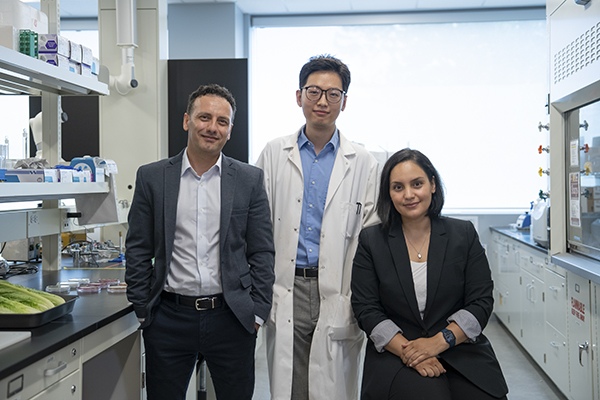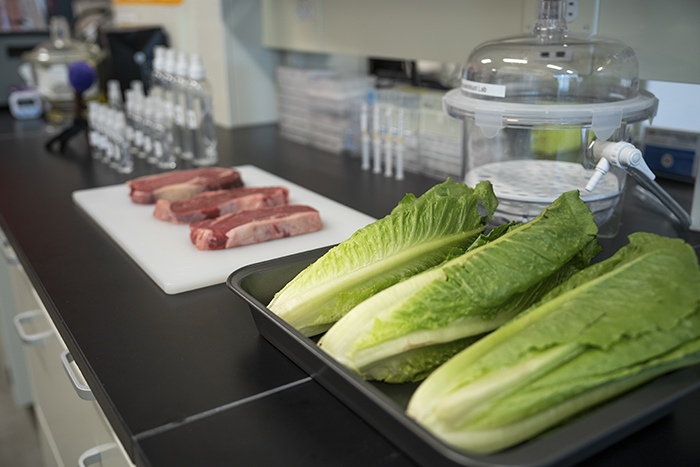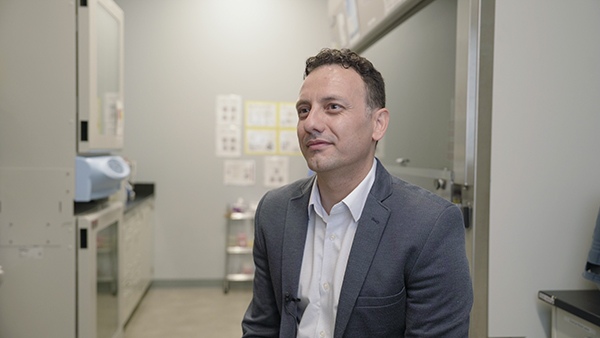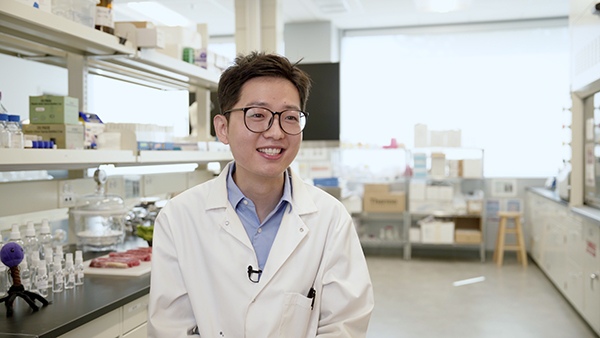
Dr. Zeinab Hosseinidoust’s Newly Developed Powerful Sprayable Phage Disinfectants
Dr. Zeinab Hosseinidoust and her research team at McMaster University have successfully invented a new way of combating bacterial contamination in our food and surface areas such as offices, hospitals, etc. This powerful product is a result of formulating millions of bacteriophages (phages) into a small, soft, hydrated ball. Each ball is about 20 microns (one 50th of a millimeter) in diameter.
Though phages were discovered before antibiotics, scientists have been more interested in developing antibiotics. With the rise in antibiotic resistance, phages have become humanity’s new hope in a post-antibiotic era because phages are natural predators of bacteria. In the article published in “Nature Communications”, Dr. Hosseinidoust’s research team states their sprayable disinfectant is food safe and highly effective.
With the renewed interest in phage disinfectants, we greatly appreciate being able to interview Dr. Hosseinidoust and learn about this new direction in research.

Q: Congratulations on your recent breakthrough invention of creating a spray that can kill bacteria in food. First of all, please introduce yourself to our readers.
A: My name is Zeinab Hosseinidoust. I am a chemical engineer and an associate professor at McMaster University Faculty of Engineering. I am also a Canada Research Chair in Bacteriophage Bioengineering. You can find out more about the Canada Research Chair program here.
You can also find out more about my Canada research chair award here.
Q: Please give us a summary of your invention.
A: We formulated bacteriophages into small, soft, and hydrated balls; each tiny ball contains half a million phages. Bacteriophages are bacterial viruses and are natural predators of bacteria. Like many biological entities, bacteriophages do not like desiccation and harsh environments. The moisture trapped in these tiny balls preserves and protects the phage against desiccation, which can deactivate the phage. When packed into a spray, these tiny balls deliver an army of phages to a contaminated surface. This contaminated surface can
be fresh produce in a grocery store, meat packaging, food preparation surfaces at home or in commercial facilities, or surfaces in hospitals and surgical rooms.
Q: What is the significance of your research to humanity?
A: Antibiotic resistance threatens the foundation of global sustainable development. With the rising tide of antibiotic resistance, bacteriophages may be our hope for a post-antibiotic era. Phages are very powerful, yet mild, antimicrobials. They are very specific to their host bacteria. This means that they can be formulated to kill only the harmful bacteria, not the good bacteria that is responsible for the taste, smell, or texture of some food. For biomedical applications, this specificity is very important because we know good bacteria in our body (our microbiota) play a critical role in protecting our physical and mental health. What we address in our lab is bridging the gap between our knowledge of phage biology and filed/clinical application. We develop material, coatings, sensors, assays, and criteria for phage formulation as well as models for phage therapy. The materials we develop are specifically useful because they can be used to preserve and protect phages in real-life applications, and therefore we address a bottleneck to the everyday use of phages.
Q: As we know, scientists were greatly interested in phage disinfectants in the 1940s. Why has the interest in them been renewed?
A: Great question. Phages were discovered before antibiotics and for close to 25 years were one of the few tools available against bacterial infections. This was a time when people died of a simple infection, and phages were used widely in North America and around the world for human therapy. There are records of large-scale trials with entire villages cured with phage (compared to high mortality in an adjacent village by the same infections without phage). But the downside was that the knowledge on phage biology and microbiology of infectious diseases was very little; in other words, scientists didn’t know exactly how phages worked or how the disease progressed, and certainly nothing useful about the role of our immune system in all this. There are records of many research labs and companies making phage preparations, but the same records indicate that most were not active, so people clearly were not aware of factors that deactivate phage. Phages are specific to their host bacteria, so they don’t kill everything (like most other antimicrobials do), so that was another source of confusion. Antibiotics are basically chemicals (compared to phage which is a virus) and are indiscriminate killers (so they have a broad range compared to phage). Antibiotics were much easier to use with the limited knowledge at the time. Later, scientists discovered how harmful this indiscriminate killing action can be. Besides, it didn’t take long for the first case of antibiotic resistance to be reported, so it was clear that antibiotics, while very powerful, are not a silver bullet. It didn’t take long for scientists to revisit phage and many older experiments and trials were related to up-to-date scientific and clinical standards. Phages have been at the center of attention in the western scientific world for a while, and phage products for food applications have been approved by FDA in the late 90s, but only recently have we become desperate enough to use them in the clinic. There were high-profile cases in the US involving patients that had no other hope for life and were saved by intravenous phage therapy. Phage therapy was available to those who chose it, but they had to go to places like the Eliava institute in Tbilisi, Georgia. Superbugs, however, have backed us in the western hemisphere into a corner and force us to stop procrastinating and start taking practical steps towards using phages for fighting infections.
Q: Are the bacteria-killing viruses in your spray dangerous to the human gut biome when consumed? If not, why not?
A: That’s one of the most important advantages of phage, they are specific killers. They target specific bacteria, so you can formulate a phage product to kill only harmful bacteria and not our gut microbiome. We do not expect our spray to affect our gut microbiome. We have evidence from other research projects in our lab to back up this optimistic verdict.
Q: Can your spray be used for other purposes like medicine delivery, spacecraft sterilization, etc?
A: Yes! Our spray contains phage only, no other
chemicals or preservatives, no residues or harsh chemicals. We envision the spray being used in all steps of the food chain, in hospitals and healthcare settings (surgical rooms for example), in our homes, and beyond. So yes, spacecraft sterilization is a great application.
Q: As the Canada Research Chair in Bacteriophage Bioengineering, what is the scope and mission of your position?
A: You can find out more about my Canada research chair award here:
https://www.chairs-chaires.gc.ca/chairholders-titulaires/profile-eng.aspx?profileId=5158#:~:text=Dr
Q: Is there anything else you would like to tell our readers?
A: I want to acknowledge funding and support from NSERC and CIHR and the Canada Research Chairs program, as well as McMaster University and the Faculty of Engineering. I want to thank the exceptionally creative scientists and engineers in my lab. What I like to highlight is the importance of interdisciplinary research and cross-disciplinary collaboration in advancing applied phage research. We need more engineers, clinicians, chemists, and physicists in this field.
We would like to thank Dr. Zeinab Hosseinidoust’s candid explanation of her new research product. We are looking forward to its availability on the market soon and wish Dr. Hosseinidoust great success!

